Bad News #3 edited by Paul Karasik (206x260mm)
This is the third and final issue of the magazine that started as a class assignment at the School of Visual Arts, but I think by this point, it wasn’t that at all… although it featured many people who had gone to the SVA (or been a teacher there). (Kaz above, and a quite stylish contents page.)
Here we have Jerry Moriarty (a teacher at the SVA, I think?) and a Ben Katchor thing that’s quite amusing to read — it spirals inwards in a quite natural fashion. In the lower right hand corner, there’s even a street corner to guide the eyes in the right direction.
Robert Sikoryak retells a bunch of John Cage anecdotes as if they were comic strips. It’s fun.
Ooh! Jayr Pulga! I think he’s been featured in at least half a dozen of the books I’ve been covering in this blog series, but I know nothing about him. Let’s google! Hm… He doesn’t seem to ever have published a stand-alone book, which is a shame, because he does all these interesting things, storytelling-wise, and his artwork is gorgeous, of course, and quite a bit unnerving… Here’s his web site; looks like he went into illustration? Probably a wise choice. I mean, illustration is something you can make a living from.
Ida Marx channels Nancy. As one does.
This book has a great flow — each piece seems to relate to the next one, but not in an overt fashion. The Ida Marx page, for instance, which told a very personal, heartbreaking story in a distanced, formal way, echoes nicely in this longer piece by Thomas B. Dutcher, which is also about heartbreak, and is also told in this distanced way… They’re very different stories, of course, and you kinda wish somebody would just say to Dutcher “well, you could ask her to, like, clarify”… but anyway.
Oooh! I remember this one so well! I re-read it a gazillion times and adapted it for the Amiga. It’s such a simple conceit, and it’s so disturbing.
This was apparently not the piece Mark Newgarden had planned on including in this issue: Art Spiegelman famously (and allegedly) threatened Paul Karasik and made him hand over two pieces meant for Bad News #3 to Spiegelman: The Newgarden Nancy piece (the best thing in Raw #8) and Richard McGuire’s Here (the best thing, I vaguely remember, in Raw vol 2 #1).
Perhaps for the best, in some ways: McGuire’s Here had a huge impact over in Raw, and is one of the most influential single art comics pieces ever, and that may not have happened in this book (which I assume had tiny sales, and in the comics speciality market only). (And since this is Fantagraphics in 1988, the paper stock is absolutely horrendous — there’s a lot of bleed-through on these pages, which makes everything look kinda… meh…)
McGuire does a pretty amusing strip about his grandfather instead here.
(Oh, and a tiny little thing from Gary Panter here, too.)
Spiegelman shows up himself with a page from his sketchbook. Perhaps as a consolation prize for stealing the two pieces?
Anyway. This is a solid anthology. I only wish it had been printed on better paper.
Robert Boyd writes in The Comics Journal #200, page 20:
Bad News fell right between RAWs
arty refinement and Weirdo’s primitive
kookiness. Curiously enough, neither Bad
News#l nor Bad News#3 was nearly as good
— the first issue was too amateurish, and
the third felt like an afterthought. Bad News
#2 perfectly embodied a punk, post-mod-
ern approach to comics. Its urban “fuck you”
sensibility now informs a big segment of the
alternative comics scene today (Hate, Steven,
Underworld, Zero Zero, etc.). Thirteen years
later, Bad News#2 still strikes me as one of
the finest anthologies ever done.
Sikoryak is interviewed in The Comics Journal #255, page 95:
KELLY: HOW did first meet up With
Art and Franf0ise?
SIKORYAK: When I in Parsons, I
took a satirical illustration class taught by
Steven Guarnaccia. He did the cover Of the
last Drawn and Quarterly, volume At
Parsons, he exposed me to a lot Of obscure
artists and magazines. I already knew’ and
loved Raw, and he hooked me up With
them. At that point in the ’80s, they were
often looking for help of one kind or
another. I started working for them at the
release party for Raw #8, Which I believe
was also the release party Of the first
Pantheon edition of Maw. So I started
working for them just as Art was becoming
a real public figure. I helped out a little
around the office on and Of While I was
going to school and then slowly became
more involved.
KELLY: was Mark Neu,garden still
involved With them at that point?
SIKORYAK: Yeah. That was interesting,
because I took a lecture class that Art
teaching at SVA I was sitting in on a lot of
classes at SVA at this point While I was also
getting my degree at Parsons. When Art’s
class ended, I found out about a class
that Paul Karasik and Mark Newgarden
were teaching. While in their class, I began
drawing a strip that ended up in Bad News
#3. That was the first place I was pub-
fished. so in a sense, Art got me into their
class, and then Art saw my piece in Bad
News, and that led to my work appearing
in Raw. At that point, in 1988, it never
would have occurred to me to try to get in
to Raw, because everything in there
seemed so much more accomplished than
What I was capable of. And that class With
Paul and Mark got me focused on the par-
ody approach that I’m doing now. My Bad
Neus Story, the John Cage strip, incorpo-
rated a lot Of different styles and helped get
me interested in adaptations and this par-
ticular Mirt Of parody.
KELLY: that even just sort Ofa gen-
end assignment at SVA rhe rime? I think
that Mark’sfirsr Raw piece was the Pep Boys
strip, Which came from a class assignment,
Iin preny sure: Taking familiar tbamcrers
and purring rhem in strange situations …
SIKORYAK: well, certainly it was in the
air. Also in that class with Paul and Mark,
we had to draw a story about an early
experience with death using the characters
from Nancy. That was right up my alley,
although it •,vas an alley that I hadn’t quite
explored yet. But, the ’80s were the era of
post-modernism. I guess we’re still in that
era. Sometimes it seems like it’s passed,
Other times it seems alive and well. I cer-
tainly felt like I part of it. But the
John Cage story was an assignment to cre-
ate a biographical strip about someone
you admired. Only as I worked on it, I hit
upon the idea of drawing it in a dozen dif-
ferent styles, which really clicked for me.
You u.orkea at years?
SIKORYAK: Yeah. Well, I first met them
at that Raw release party. I think I was sell-
ing books or something that night. I was
kind of in awe of them. This was1986.
For the first couple years I worked there,
they were in between new issues of Raw
and were publishing books with Pantheon
at that point. They did the Read Yourself
RAW collection, Mark Beye€s Agony,
Garis Jimbo and Charles Burns’ Hard
Boiled Defective Stories.
KELLY: Drew Friedman’s Warts and
collection one of rhe books?
SIKORYAK_: NO, that Was With Penguin, a
few’ years later. But the first year or two I
working for Raw, I was packing boxes,
filling orders and doing chores. I may have
spent a day cutting overlays for the Jimbo
book. Very minimal production work, but
helping out around the office, whatever
needed to be done. It pretty much all I
wanted to do, to work at Raw, as far as day
jobs go. They also put out an annual SoHo
Map. I know ifyoud remember it. I
was very involved in the production of that.
This was a money-making project, before
Art and Franqoise urre co-publishing with
Penguin and HarperCollins. The profits
from selling advertisements in the Soho
Map kept the Raw office running.
At the same time, I weas doing a little
work for Topps. I wrote a few gags for the
backs of Garbage Pail Kids cards. I also
wrote a whole bunch Of Bazooka Joe
comics that never came out. I think they
decided to revamp the character right after
they bought all my strips. That was fun
while it lasted.
KELLY: This was the Howard Cruse era?
SIKORYAK: It was right at the end of the
Cruse era. I think Howard was going to
draw another round Of them, and I was
submitting gags for that for several
months. I was making a living between
Raw, Topps and a couple illustration jobs
here and there. I did something for
Esquire around that time, and did some
textbook illustration. Anyway, I was get-
ting by with that, when Penguin started
putting out the digest-sized Raws I was
working there “full time.” For me, that
meant a few days a week, but I was heavi-
ly involved in the production of those. I
shot stats, I did coloring, I did lettering. I
did some really bad lettering for them; I’m
surprised they printed it. (Laughter.] I was
just looking at some the other day. Some
of my lettering was substandard, I think.
KELLY: What would that be for? The
SIKORYAK: WI. Like Marti, Mariscal,
I forget Who else. These were strips that
were translated into English. I would also
retouch some of the reprints. There was a
Gustave Dore story in Raw #3 that I
extensively retouched. We were making
Photostats from reprints in Other books,
so the line-work had gotten all blotchy and
filled in. I went in with an X-acto blade
and Rapidographs, and would scratch out
areas and straighten out lines. Very care-
fully trying to match what the artist had
done originally, making the lines cleaner.
But I wasn’t the only one there. There
were several people at that point, from ’89
to , When we were doing the Rau,s With
Penguin. James Sturm was there, Steve
Marcus, Mike Rex — a lot Of people
worked on those issues. I would still do
the day-to-day stuff, all sorts Of things.
Answering the phones and keeping people
from camping out on the doorstep (laugh-
red because people would still come by
and ask, “Can I see anybody?” I was often
the only one there, luckily. I could honest-
ly say I didlft have the authority to get
them published in RAW. [Laughter.]
KELLY: Where was office?
SIKORYAK: On Greene Street, in Soho.
The office used to be in their loft, back in
the mid ’80s. Around ’85, when I was in
school, I actually went by their Office
because I was trying to track down Gary
panter. I was hoping I could get him to
give a lecture in one my classes. But I
find his or their number, so I pro-
ceded to do what I heard people did for
12 years afterward; I just showed up at
their door, buzzed them and said, “I’m
trying to contact Gary Panter. Is there
some way I can get a hold of him?” Of
course, no one there let me in. [Laughter.]
have no idea who was manning the door
that day; this was long before I d met any
of them. It was pathetic. “Can I leave a
note for him? Can I contact him some-
how?” As if he lived there. [Laughter.] so
afterwards, I could always sympathize
with whoever showed up.
Sorry for quoting so much here, but I just found this bit about the Raw offices interesting.
This blog post is part of the Punk Comix series.
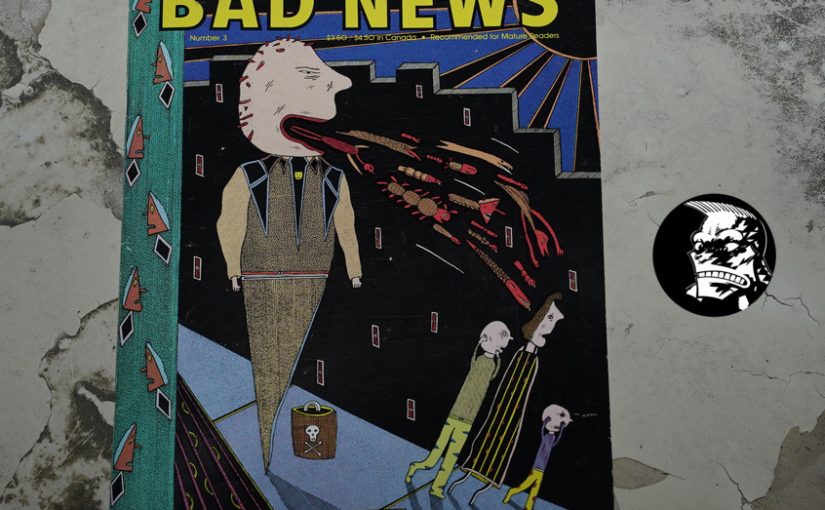
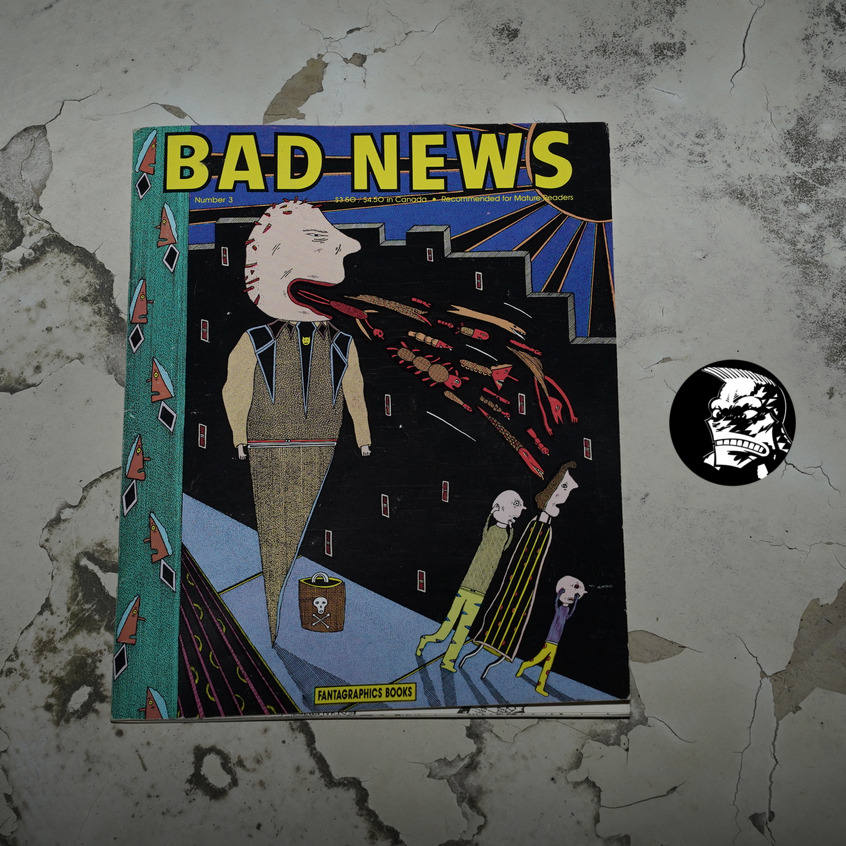
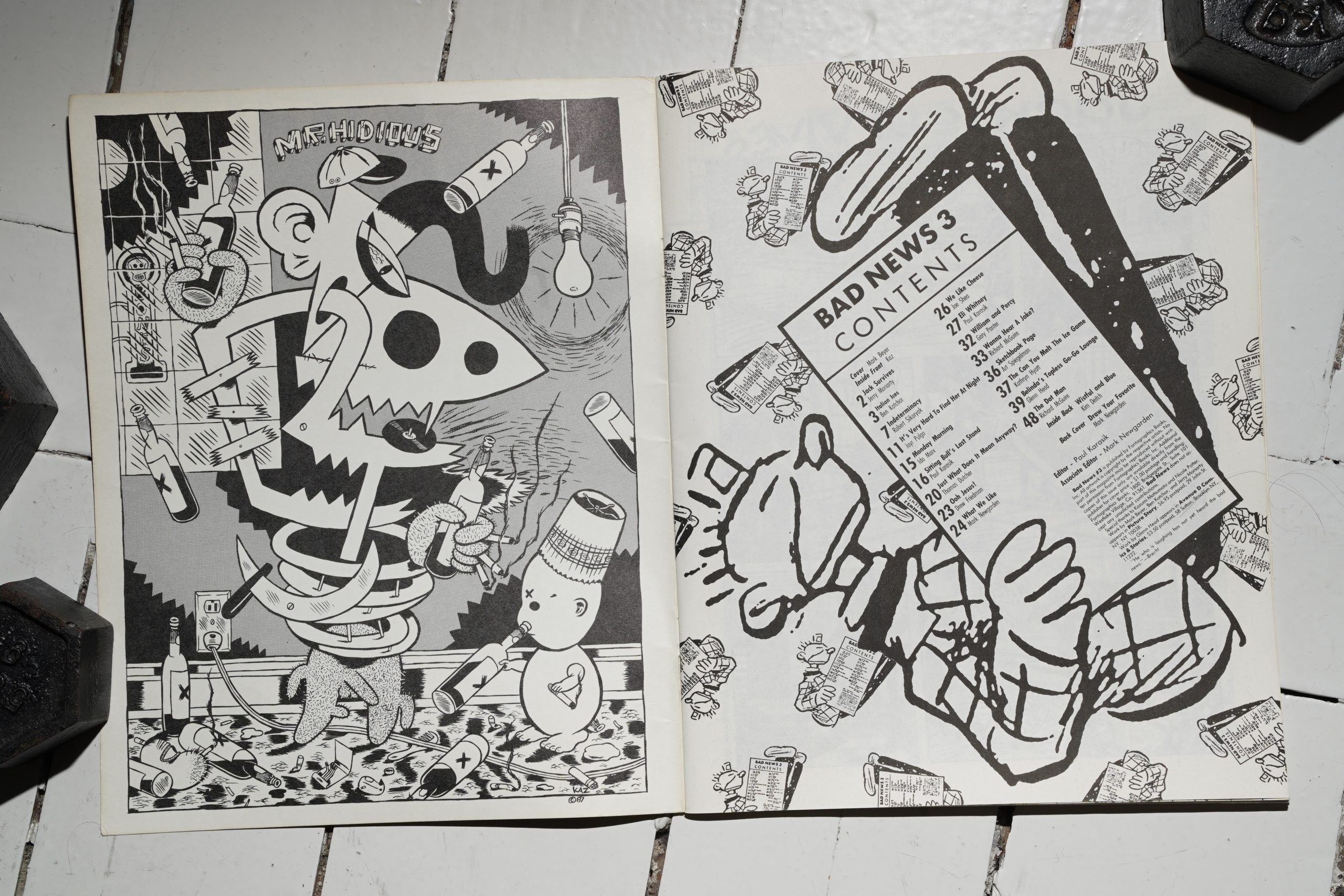

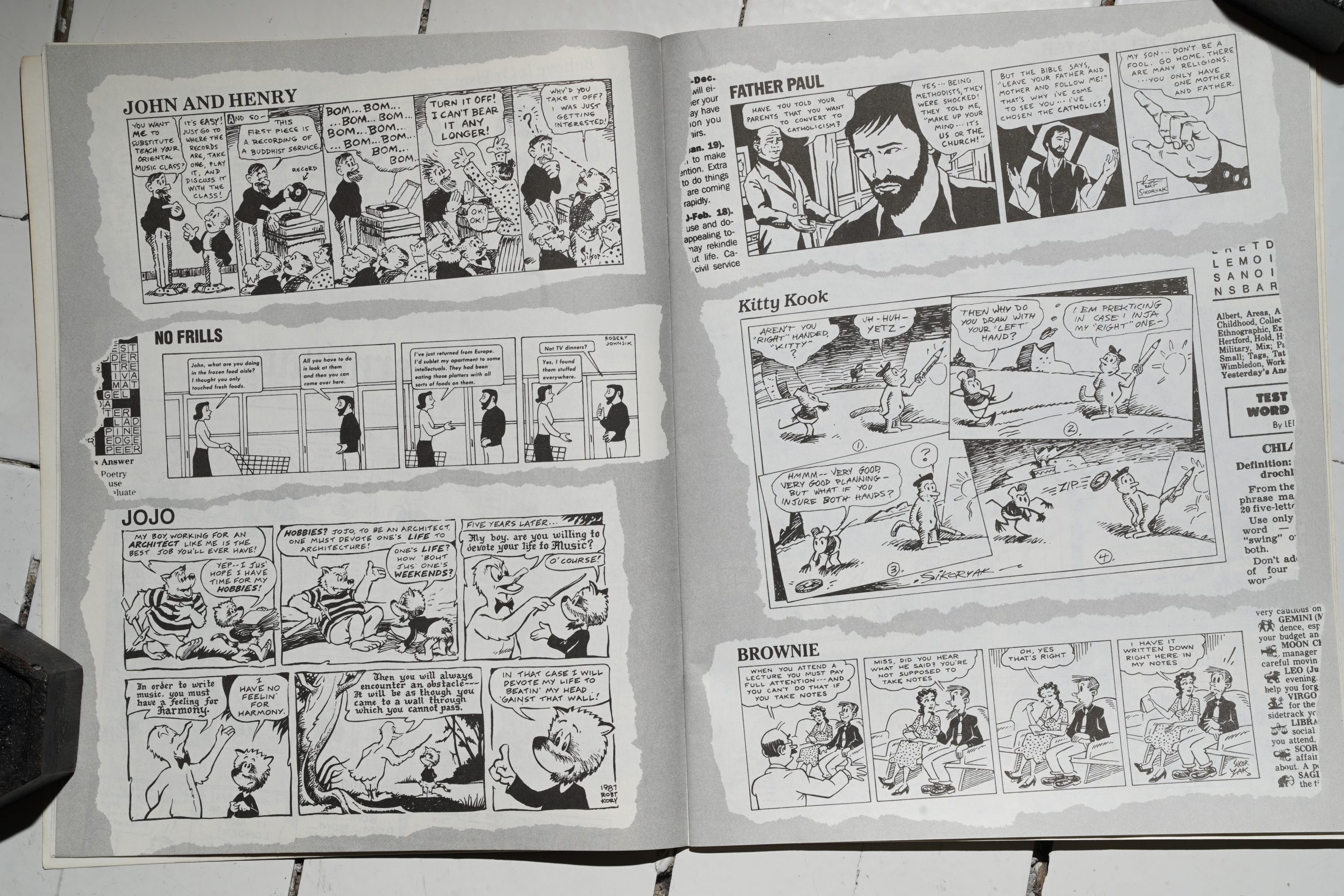
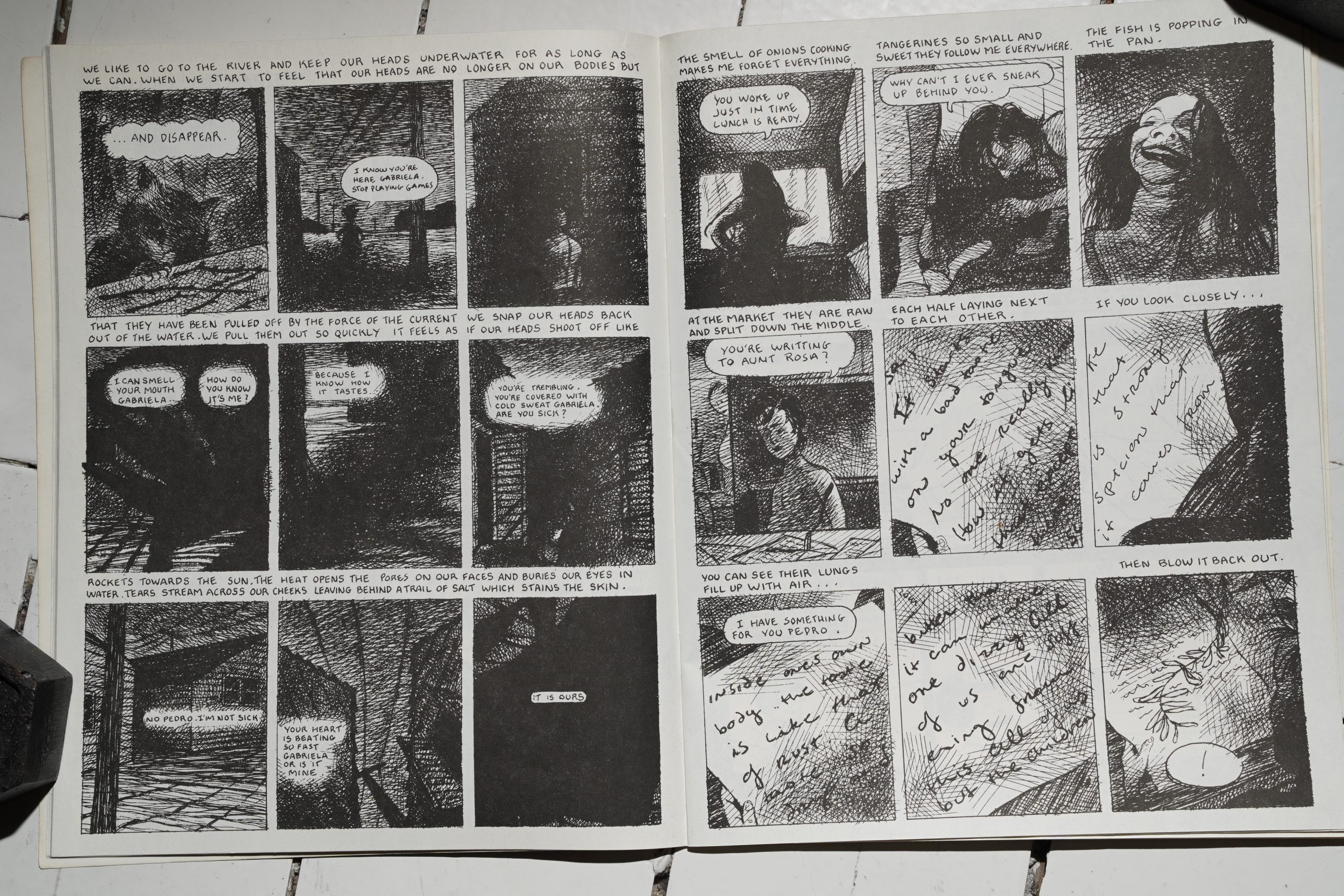
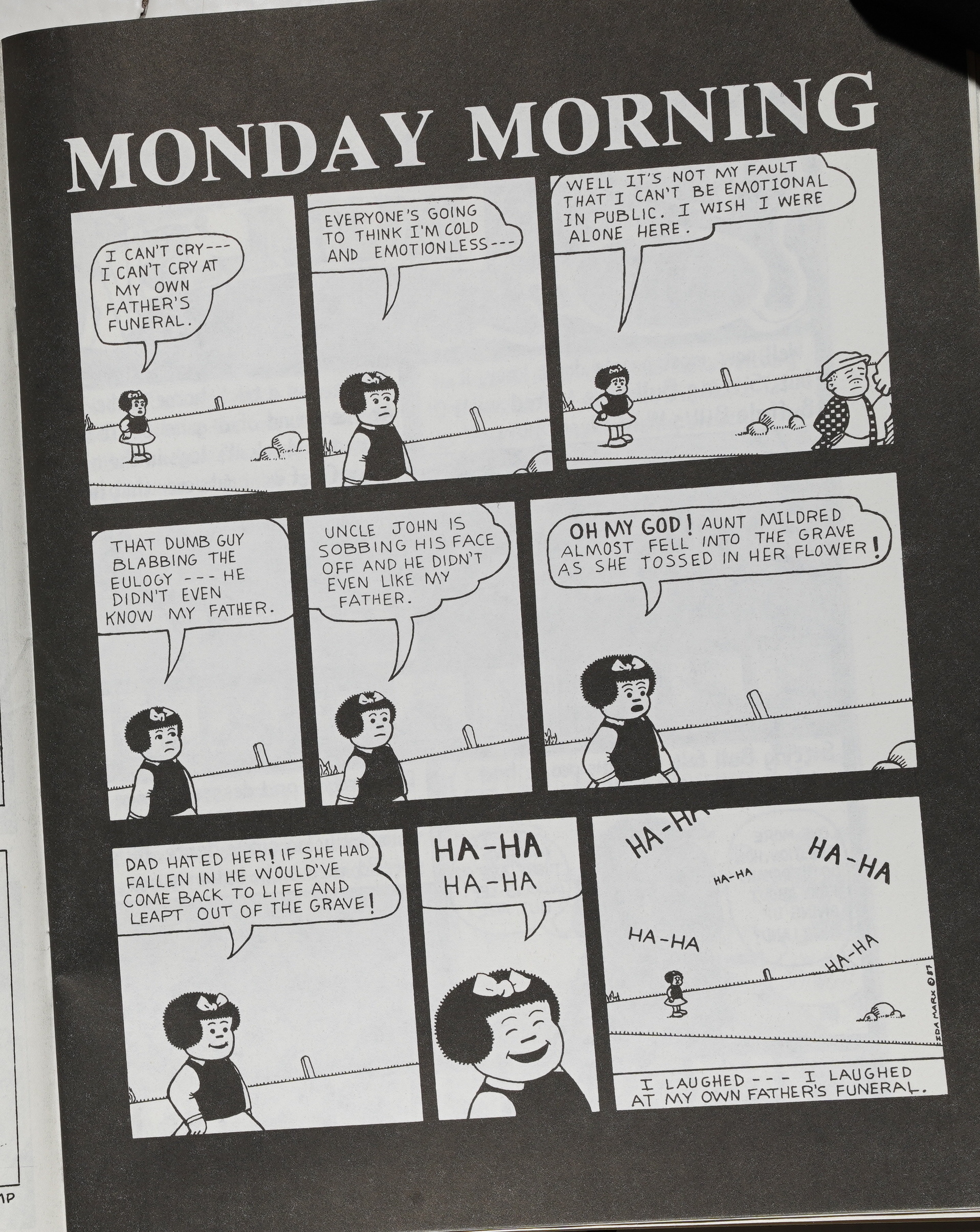

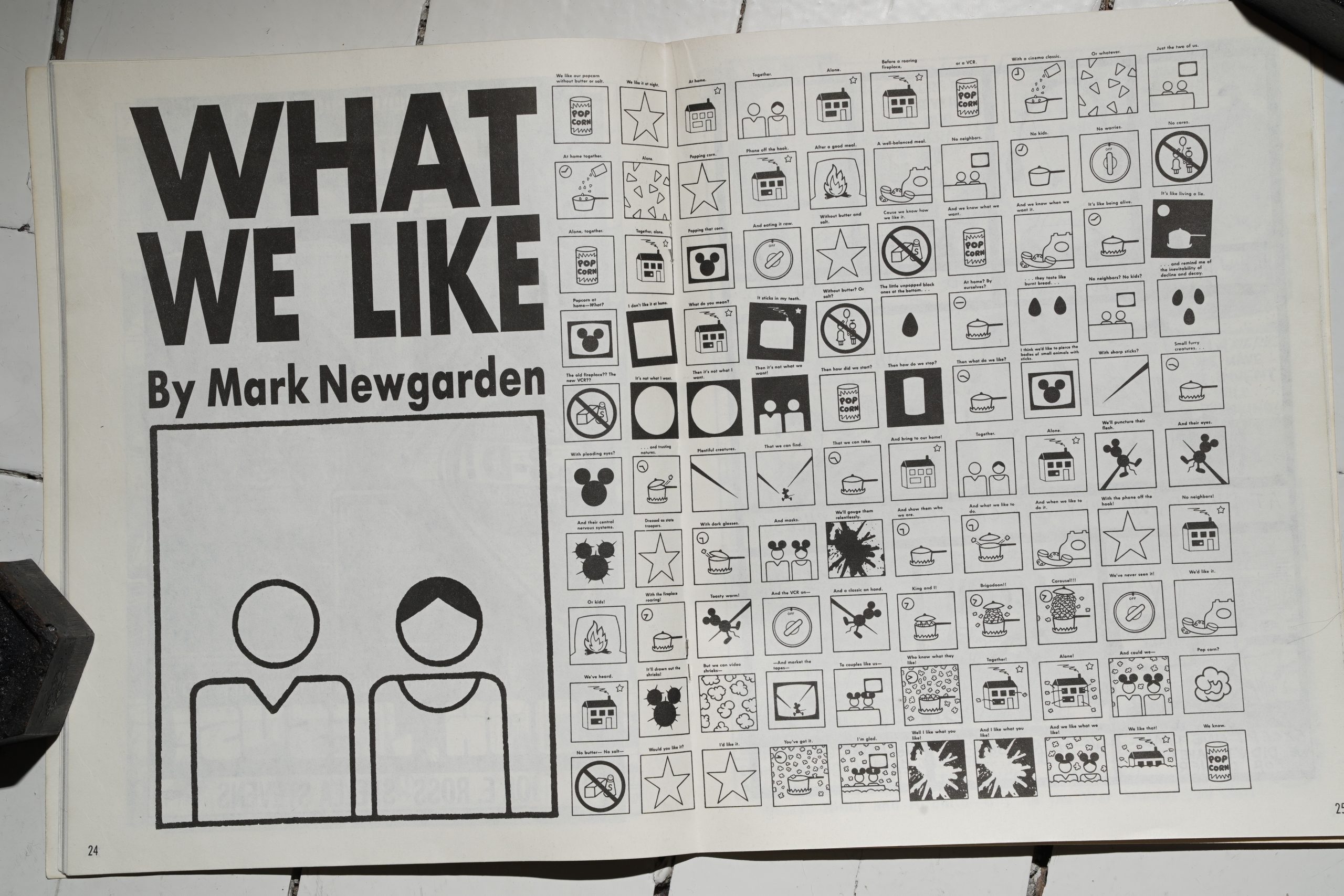
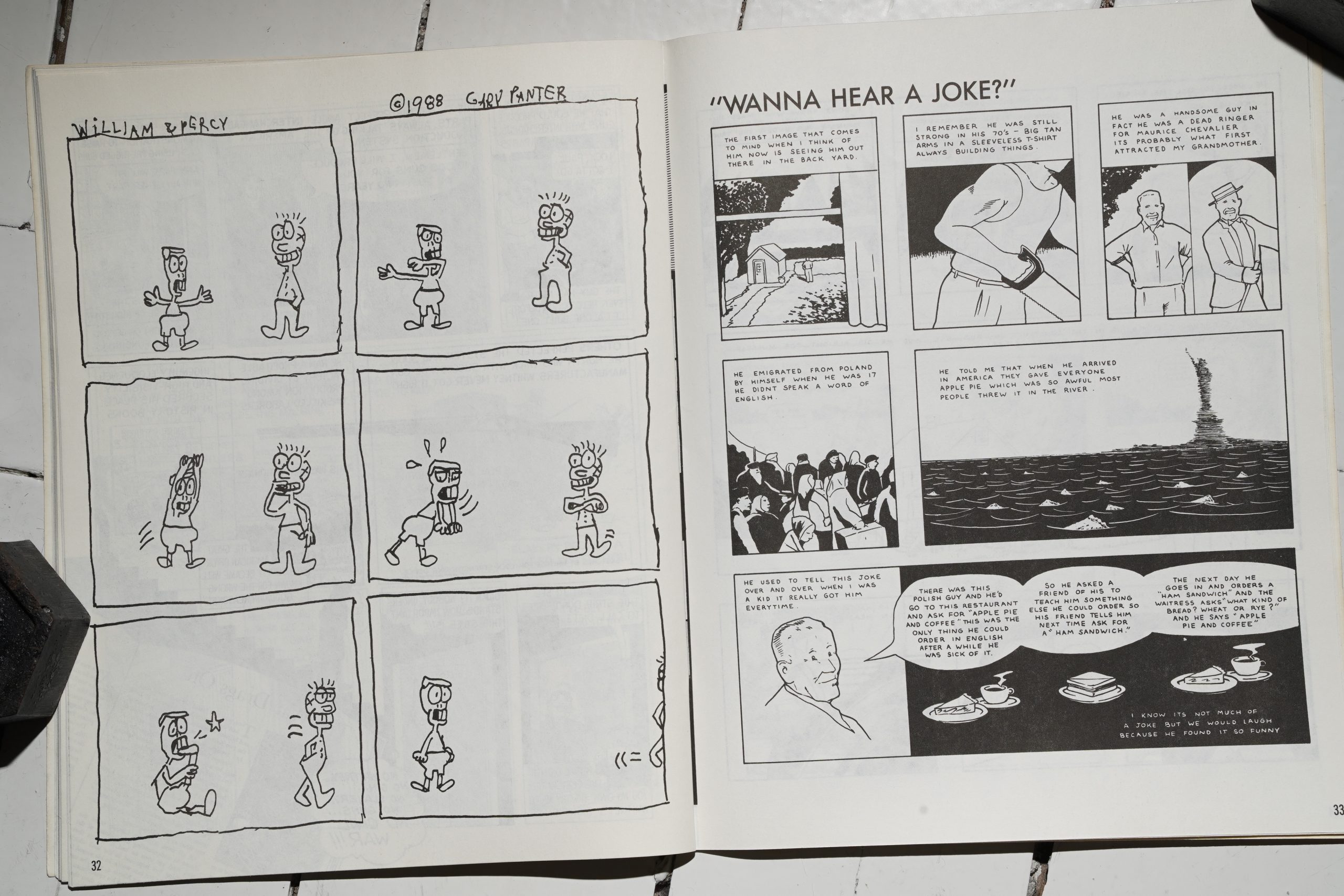
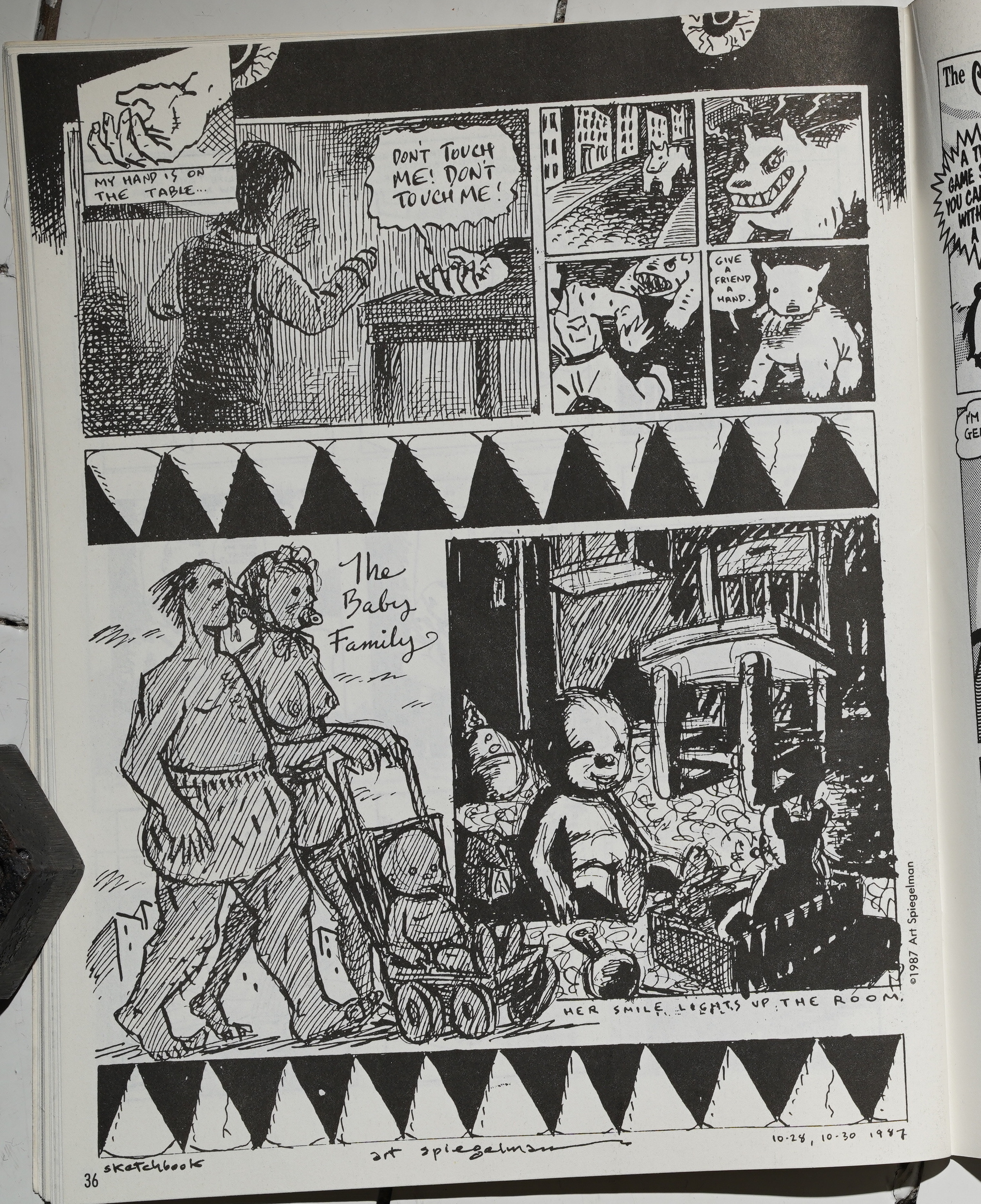
2 thoughts on “PX88: Bad News #3”